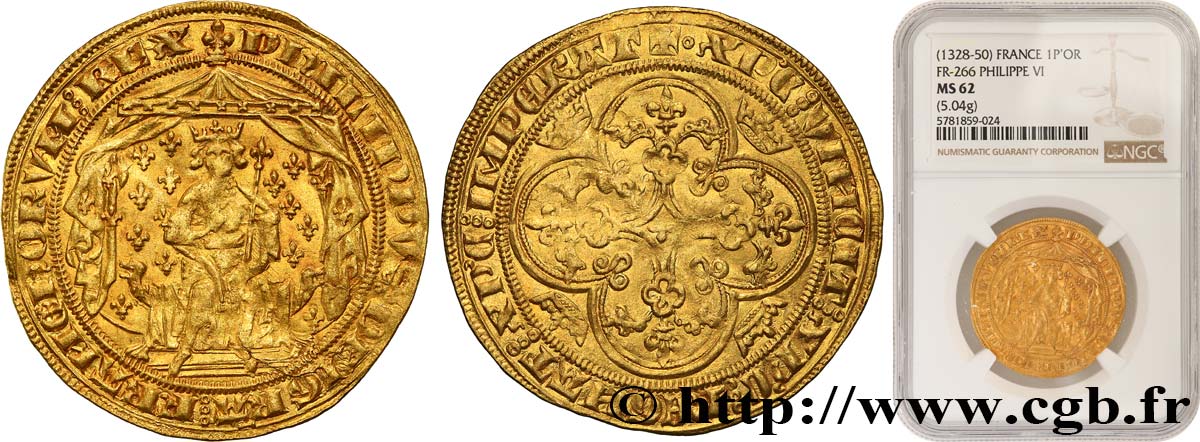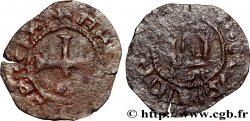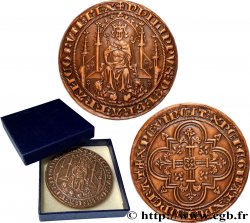Live auction - bry_677588 - PHILIP VI OF VALOIS Pavillon d'or 08/06/1339
You must signin and be an approved bidder to bid, LOGIN TO BID. Accounts are subject to approval and the approval process takes place within 48 hours. Do not wait until the day a sale closes to register. Clicking on "BID" constitutes acceptance of the terms of use of cgb.fr private live auctions.
Bids must be placed in whole Euro amounts only. The sale will start closing at the time stated on the item description; any bids received at the site after the closing time will not be executed. Transmission times may vary and bids could be rejected if you wait until the last second. For further information check the Live auction FAQ
All winning bids are subject to a 18% buyer’s fee.
All winning bids are subject to a 18% buyer’s fee.
| Estimate : | 9 000 € |
| Price : | 6 500 € |
| Maximum bid : | 6 700 € |
| End of the sale : | 07 December 2021 16:38:11 |
| bidders : | 5 bidders |
Type : Pavillon d'or
Date: 08/06/1339
Metal : gold
Millesimal fineness : 1000 ‰
Diameter : 31,5 mm
Orientation dies : 9 h.
Weight : 5,05 g.
Rarity : R2
Slab

NGC : 62
Coments on the condition:
Ce pavillon d’or est frappé sur un flan très large et légèrement voilé. Petite craquelure de métal en bas à gauche des pieds du roi
Predigree :
Exemplaire n° 24 du trésor de la région de Pontivy (Morbihan). Exemplaire sous coque NGC, n° 5781859-024, MS62
Obverse
Obverse legend : PHILIPPVS° DEI GRA° FRANCHORVM° REX, (PONCTUATION PAR ANNELETS SUPERPOSÉS).
Obverse description : Le Roi assis sur une chaise curule ornée de têtes de lion, couronné, tenant le sceptre fleurdelisé de la main gauche sous un pavillon fleurdelisé et surmonté d'un lis.
Reverse
Reverse legend : +° XP'C° VINCIT° XP'C° REGNAT° XP'C° IMPERAT, (N INVERSÉES, PONCTUATION PAR SIMPLE ANNELET PUIS PAR TROIS ANNELETS SUPERPOSÉS).
Reverse description : Croix quadrilobée, feuillue et fleuronnée, incurvée en cœur, dans un quadrilobe tréflé cantonné de quatre couronnes.
Reverse translation : (Le Christ vainc, le Christ règne, le Christ commande).
Commentary
Le sceau de majesté de Philippe est au type du pavillon. Le pavillon d’or est rare et ne connut qu’une seule émission ordonnée le 8 juin 1339.








 Report a mistake
Report a mistake Print the page
Print the page Share my selection
Share my selection Ask a question
Ask a question Consign / sell
Consign / sell
 Full data
Full data









